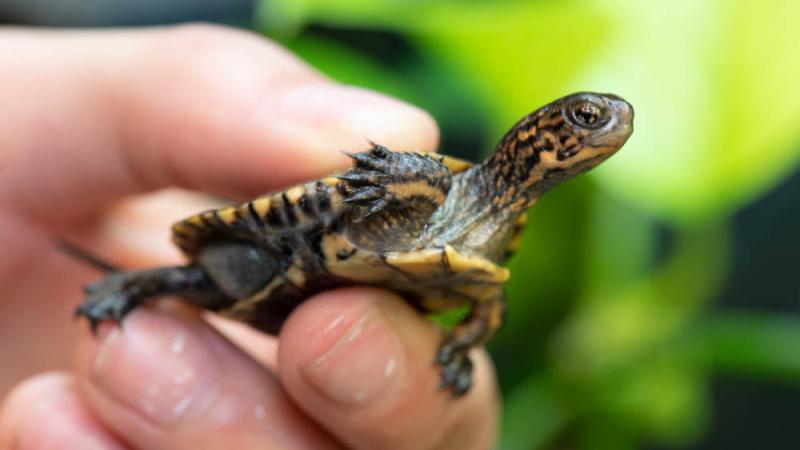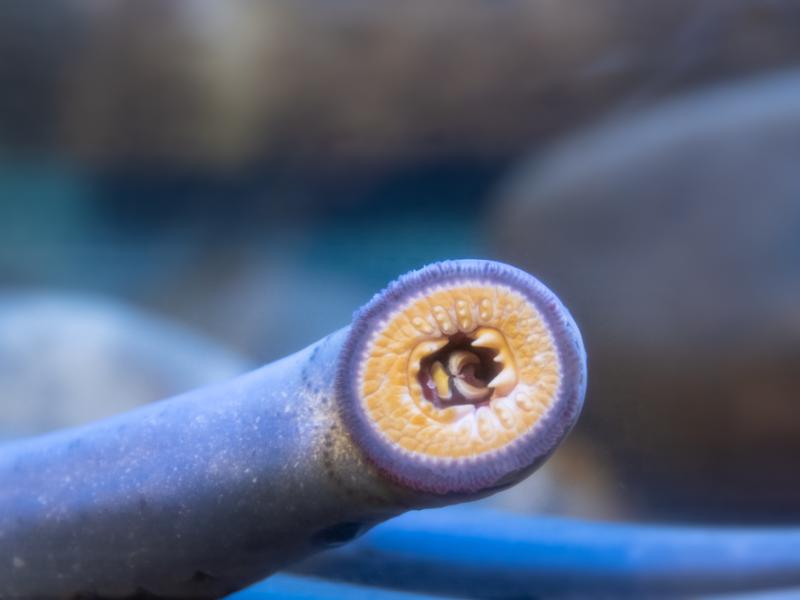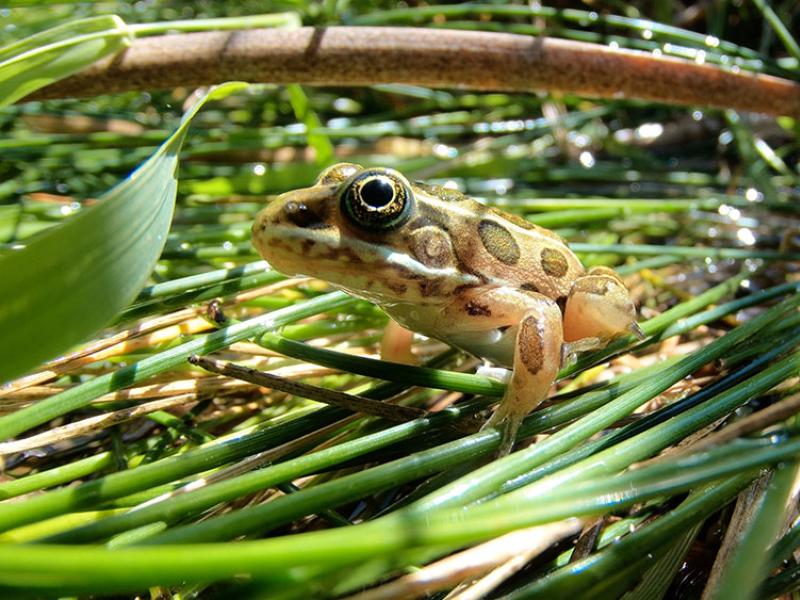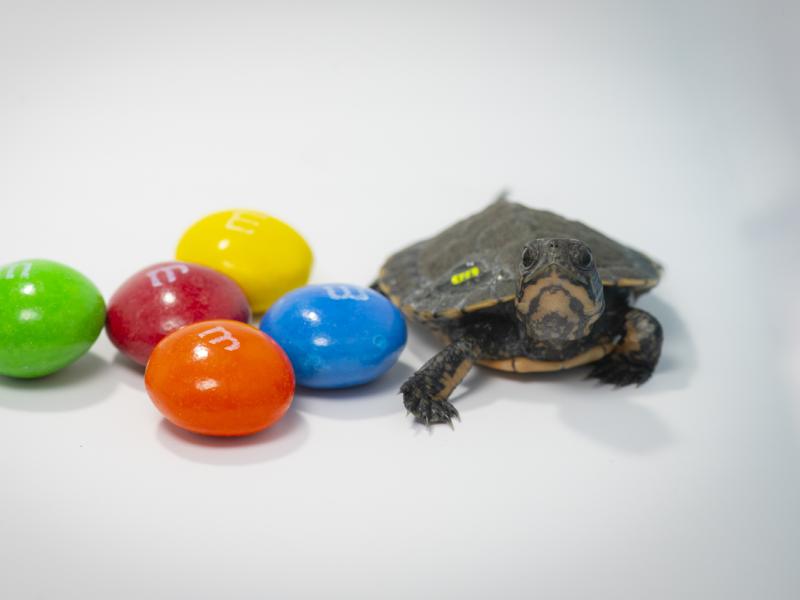Rescuing western pond turtles: A Q&A with Shelly Pettit

Two decades ago, western pond turtles were on the verge of completely dying out in Washington, with fewer than 100 turtles left in the state. Since then, more than 1,500 zoo-reared turtles have been released back into the wild, thanks to a collaborative head-starting program.
Shelly Pettit, the Oregon Zoo's senior keeper for reptiles and amphibians, is on the frontlines of the recovery efforts. She raises hatchlings at the zoo’s turtle conservation lab and helps prepare them for life in the wild.
Oregon Zoo: Why do western pond turtles need help?
Shelly Pettit: These turtles are facing extinction, and it's a serious problem. Like many other species, you have invasive species either eating them as prey or outcompeting them for territory and food. You have pollution. You have urbanization and deforestation. So many things are coming at the pond turtles all at once that we're trying to overcome.
OZ: What are some of the invasive species threatening western pond turtles?
S: Their biggest problem is bullfrogs. Bullfrogs are not native to Oregon, and they love to eat western pond turtle hatchlings. There's also largemouth bass that are living in ponds where they don't belong. And then red-eared sliders actually are another species of turtle that will outcompete them for territory and for food.
OZ: How do the turtle hatchlings make their way to the Oregon Zoo?
S: The Washington Department of Fish & Wildlife brings us hatchling turtles that we keep in our species conservation lab. We keep them warm, we keep them safe, and we feed them very well. To date, we've released 766 turtles.
OZ: What do you do to help the turtles in the conservation lab?
S: It's my responsibility to make sure that while they're here, they are getting a good diet, they're being raised healthy, they're having great shell development. Hopefully, they're learning the flight instinct when they see humans. And it's my responsibility to make sure that when they get out to the wild, they're in the best condition that they can be, so they have the best chance of survival.
OZ: How do you help them get into that condition to survive in the wild?
We like to keep the turtles for 10 months to a year, with limited human contact because we know they're going to be re-released. So, the idea is that we want to grow healthy, large turtles. To do that, we recreate summer conditions in the lab so they have 12 hours of daylight, they have very warm water and they pretty much have a non-stop supply of food. This helps us get the turtles back into the wild without them having to live in captivity for too long.
OZ: What else do you do to prepare them for life outside the lab?
S: We feed them a variety of things here at the zoo like earthworms, bugs, things like that that they’ll eat in the wild. I actually feed them live crickets a couple of times a week, so they get used to hunting. Before they're released though, we do not feed them for about a week. We like to make sure that they're nice and hungry, so when they do get released they have that urge to go find food.
Right before we actually release them in the wild, we try to give them a little bit of a taste of what life is going to be like outside of the Oregon Zoo. So, we cool down their temperatures, and then after they've adjusted to the temperatures, we actually put them outside about the last 72 hours before they go outside and be released. That way they really get used to the light cycle, the weather and anything that they might face when they are not at the zoo.
OZ: What habitat needs do western pond turtles have in the wild?
S: A western pond turtle needs more than just a pond to survive. They need healthy grasslands where they can nest and lay eggs. They need a healthy population of bugs, earthworms and things that they can eat. They need a healthy population of trees, bushes to cause shade and cover and protection from predators.
OZ: How do you determine where to release the turtles?
S: The Washington Department of Fish & Wildlife helps us locate the ponds where the turtles are going to live, usually somewhere along the Columbia River Gorge. We give each turtle a chip number, and then WDFW does what we call shell notching. This gives the turtles two different ID factors, so if we ever find them again in the future during population assessments, we know exactly where that turtle was, what year he lived at the zoo, and what cohort he was in. Once the turtles are released into the ponds, because these ponds are protected areas and there is no human traffic, I think they learn very fast how to acclimate and fend for themselves.
OZ: Is the western pond turtle project working?
S: I would definitely say the head-starting project is working. A good example is, normally the biologists give themselves three to four days to collect about 20 hatchlings to bring to us. This year's group only needed three hours because there were so many turtle hatchlings. That was really exciting news. We were really happy to hear that.
OZ: What can people do to help western pond turtles in the wild?
S: A big thing you can do is visit your local zoo where we're doing conservation. Come see the western pond turtles. Come see where they're living. Come talk to the keepers and find out what we're doing. Another thing you can do is to be very careful of the pets that you pick up. If you see bullfrogs or you see red-eared sliders in places that you are, let somebody know. Call the Department of Fish & Wildlife and let them know that you see these animals and you know they don't belong out there.
OZ: What’s it like to release these turtles back into the wild?
S: Even though it's a little bittersweet when it's time to say goodbye, it really makes you feel good when you're out there, being able to put them back into the wild and wish them luck and hope for their success in breeding and repopulating their areas. We always have a great group of volunteers also that come out with us, and just seeing everybody's excitement and willingness to help and be involved makes it a really good experience.
Oregon Zoo guests can see Shelly and the western pond turtle hatchlings in the zoo’s Nature Exploration Station. The Western Pond Turtle Recovery Project is a collaborative effort by the Oregon Zoo, Woodland Park Zoo, Washington Department of Fish and Wildlife, U.S. Fish and Wildlife Service, Bonneville Power Administration, USDA Forest Service and other partners.
More News

Zoo welcomes 'very special group' of Pacific lamprey
Twenty five Pacific lamprey arrived at the zoo from nearby Willamette Falls.June 26, 2025

A leap forward: Endangered frogs hit survival milestone
For the first time, zoo-reared northern leopard frogs survived a winter in the wild at the Columbia National Wildlife Refuge.June 12, 2025

Tiny Endangered Turtle Hatchlings Arrive At Zoo
Seventeen northwestern pond turtle hatchlings, each about the size of a walnut, are making themshellves at home at the Oregon Zoo this summer.June 4, 2025

